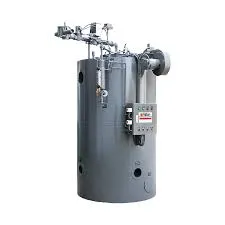- Afrikaans
- Albanian
- Amharic
- Arabic
- Armenian
- Azerbaijani
- Basque
- Belarusian
- Bengali
- Bosnian
- Bulgarian
- Catalan
- Cebuano
- China
- China (Taiwan)
- Corsican
- Croatian
- Czech
- Danish
- Dutch
- English
- Esperanto
- Estonian
- Finnish
- French
- Frisian
- Galician
- Georgian
- German
- Greek
- Gujarati
- Haitian Creole
- hausa
- hawaiian
- Hebrew
- Hindi
- Miao
- Hungarian
- Icelandic
- igbo
- Indonesian
- irish
- Italian
- Japanese
- Javanese
- Kannada
- kazakh
- Khmer
- Rwandese
- Korean
- Kurdish
- Kyrgyz
- Lao
- Latin
- Latvian
- Lithuanian
- Luxembourgish
- Macedonian
- Malgashi
- Malay
- Malayalam
- Maltese
- Maori
- Marathi
- Mongolian
- Myanmar
- Nepali
- Norwegian
- Norwegian
- Occitan
- Pashto
- Persian
- Polish
- Portuguese
- Punjabi
- Romanian
- Russian
- Samoan
- Scottish Gaelic
- Serbian
- Sesotho
- Shona
- Sindhi
- Sinhala
- Slovak
- Slovenian
- Somali
- Spanish
- Sundanese
- Swahili
- Swedish
- Tagalog
- Tajik
- Tamil
- Tatar
- Telugu
- Thai
- Turkish
- Turkmen
- Ukrainian
- Urdu
- Uighur
- Uzbek
- Vietnamese
- Welsh
- Bantu
- Yiddish
- Yoruba
- Zulu
Nov . 17, 2024 23:18 Back to list
Exploring the World of Die Casting Factories and Their Innovations in Manufacturing
The Significance of Die Casting Factories in Modern Manufacturing
Die casting factories play a pivotal role in the modern manufacturing landscape, providing essential components for a wide range of industries, including automotive, aerospace, electronics, and consumer goods. This manufacturing process involves forcing molten metal into a mold, allowing for high precision and smooth finishes, which are crucial for producing intricate parts rapidly and efficiently.
One of the primary advantages of die casting is its ability to produce complex shapes with tight tolerances. This capability significantly reduces the need for machining and secondary operations, thus saving time and costs. Components like automotive engine blocks, transmission cases, and housings for electronic devices are often produced using die casting methods. The consistent quality and durability of these components enhance the overall performance and longevity of the final products.
Die casting factories can be categorized into two main types hot chamber and cold chamber die casting. Hot chamber die casting is primarily used for non-ferrous metals like zinc, lead, and copper. This method allows for quick production cycles and is ideal for smaller, high-volume parts. On the other hand, cold chamber die casting is suitable for metals with higher melting points, such as aluminum and magnesium. This method involves transferring the molten metal from a separate furnace into the die, ensuring that the production process is safe and efficient.
In recent years, advancements in technology have further propelled the capabilities of die casting factories. The integration of automation and robotics has optimized production lines, increasing efficiency and reducing the likelihood of human error. Additionally, the adoption of computer-aided design (CAD) and computer-aided manufacturing (CAM) systems enables engineers to create highly complex mold designs that are precisely tailored to meet the specifications of their clients.
die casting factories

Sustainability has become a crucial focus within the manufacturing sector, and die casting factories are no exception. Many factories are now employing eco-friendly practices, such as recycling scrap metal and reducing energy consumption. By utilizing die casting techniques, manufacturers can produce lightweight components, which contribute to energy savings in transportation vehicles, thus minimizing carbon footprints.
The skilled workforce in die casting factories is also essential to their success. Engineers, operators, and technicians must understand the intricacies of metal behavior, mold design, and machine operation. Training and education in this field have become increasingly important to maintain high-quality production standards and to adapt to new technologies.
Looking ahead, the future of die casting factories appears promising. As industries continue to demand higher precision, lower weights, and greener production methods, die casting will remain a vital manufacturing solution. Furthermore, the growing trend towards electric vehicles and renewable energy technologies offers new opportunities for die casting applications, such as battery housings and heat sinks.
In conclusion, die casting factories are integral to the production of high-quality components in various industries. Their ability to combine efficiency, precision, and sustainability positions them at the forefront of modern manufacturing. As technology continues to evolve, these factories will likely play an even more significant role in meeting the demands of a rapidly changing market, ensuring their relevance for years to come.
-
8mm Thin-Walled Cast Steel Manhole Cover Pallet Bottom Ring | Durable
NewsAug.04,2025
-
Premium Cast Iron Water Main Pipe: Durable, Corrosion-Resistant
NewsAug.03,2025
-
Durable Cast Iron Water Mains | AI-Optimized Systems
NewsAug.02,2025
-
High-Efficiency Propane Boiler for Baseboard Heat | Save Energy
NewsAug.01,2025
-
Premium Source Suppliers for Various Gray Iron Castings
NewsJul.31,2025
-
Durable Cast Iron Water Main Pipes | Long-Lasting
NewsJul.31,2025


